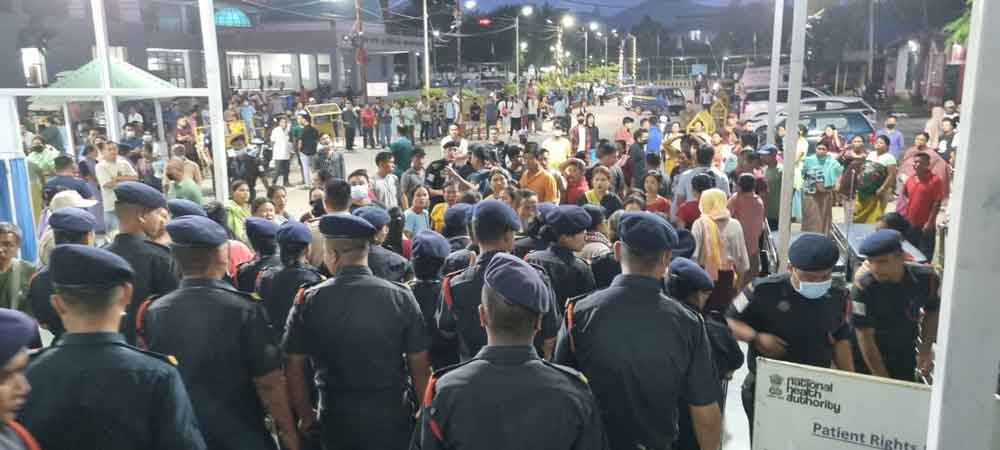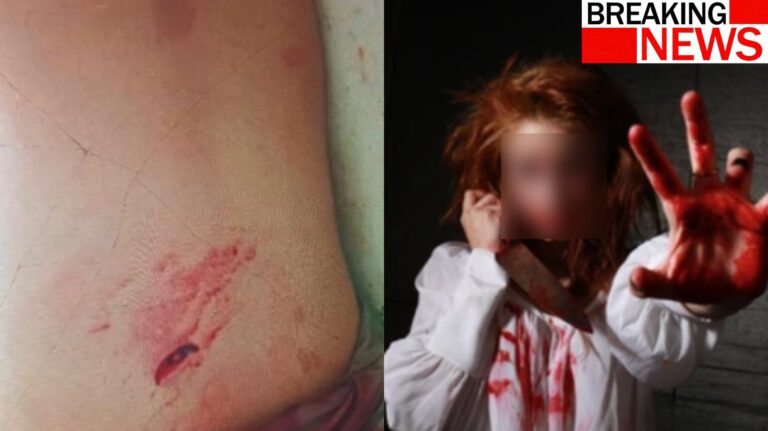Manipur Woman Dies After Alleged Medical Negligence; Family Demands Action Against RIMS
A 52-year-old woman, identified as Hijam Ongbi Ibecha, died at the Regional Institute of Medical Sciences (RIMS), Imphal, after being admitted for a knee surgery; her family alleges she was given a wrong injection that triggered cardiac arrest and have staged protests inside the hospital demanding accountability and action against the attending doctors and RIMS authorities.
When a patient dies inside a hospital, the loss is personal, raw and immediate — but when family members claim the death was preventable and caused by medical negligence, the story becomes a public one. It raises questions about procedural safeguards, staff training, informed consent, and institutional accountability. For residents of Imphal and people who rely on RIMS as a regional referral hospital, this incident is not just a headline — it’s a stress test for the trust between patients and caregivers. So let’s unpack the facts, the possible causes, the legal and clinical pathways that follow such an allegation, and practical steps families and hospitals should take to prevent repeat tragedies.
What we know so far ?
According to published reports, the deceased is identified as 52-year-old Hijam Ongbi Ibecha of Awang Sekmai. She was admitted to RIMS for knee-related treatment and reportedly died on the night of the operation after what the family describes as a “wrong injection” that precipitated heart failure. Following her death, relatives protested inside the hospital premises and demanded a formal investigation, an apology from the attending doctors, and disciplinary action, including resignation or dismissal, if negligence is confirmed. Hospital officials asked the family to move the body for autopsy — a standard medico-legal step in sudden or contested deaths — which added to tensions.
It’s important to be precise with words: the family alleges medical negligence. That means there’s a claim but not yet a legal or judicial finding of fault. Media reporting repeatedly states the family’s version — that a wrong injection led to cardiac arrest — and documents protests and demands for action against RIMS doctors. The hospital, by contrast, has followed standard procedures by asking for an autopsy and initiating internal reviews (or at least communicating with family about post-mortem formalities). Both positions — family grievance and institutional protocol — are part of the same story and will determine how investigations proceed.
FAQs
Q1: Who was the deceased and what are the family’s main allegations?
A1: The deceased is reported to be 52-year-old Hijam Ongbi Ibecha of Awang Sekmai. Her family alleges she was administered a wrong injection at RIMS which led to heart failure; they have protested inside the hospital and demanded accountability.
Q2: Has RIMS commented or launched an investigation?
A2: Media reports indicate hospital authorities followed standard procedure by requesting an autopsy and engaging with the family; local reports mention hospital administration discussions and the likely initiation of internal review processes. Formal public statements and committee findings may follow.
Q3: What does an autopsy tell us in such cases?
A3: An autopsy can identify the physiological cause of death (e.g., cardiac arrest, anaphylaxis, internal injury) and, when combined with toxicology, can indicate whether drugs or reactions played a role — critical information when families allege a wrong medication was given.
Q4: Can families file criminal charges for alleged medical negligence?
A4: Yes. Depending on evidence, families may lodge an FIR alleging negligence or even culpable homicide if the facts suggest gross negligence; they can also pursue civil or consumer suits for compensation and request disciplinary action via medical councils
Q5: How can hospitals reduce the risk of “wrong injection” or similar medication errors?
A5: Best practices include barcode medication administration, two-person verification for high-risk drugs, clearly labelled syringes, frequent staff training, and a culture that encourages reporting and learning from near misses rather than blaming individuals alone.




